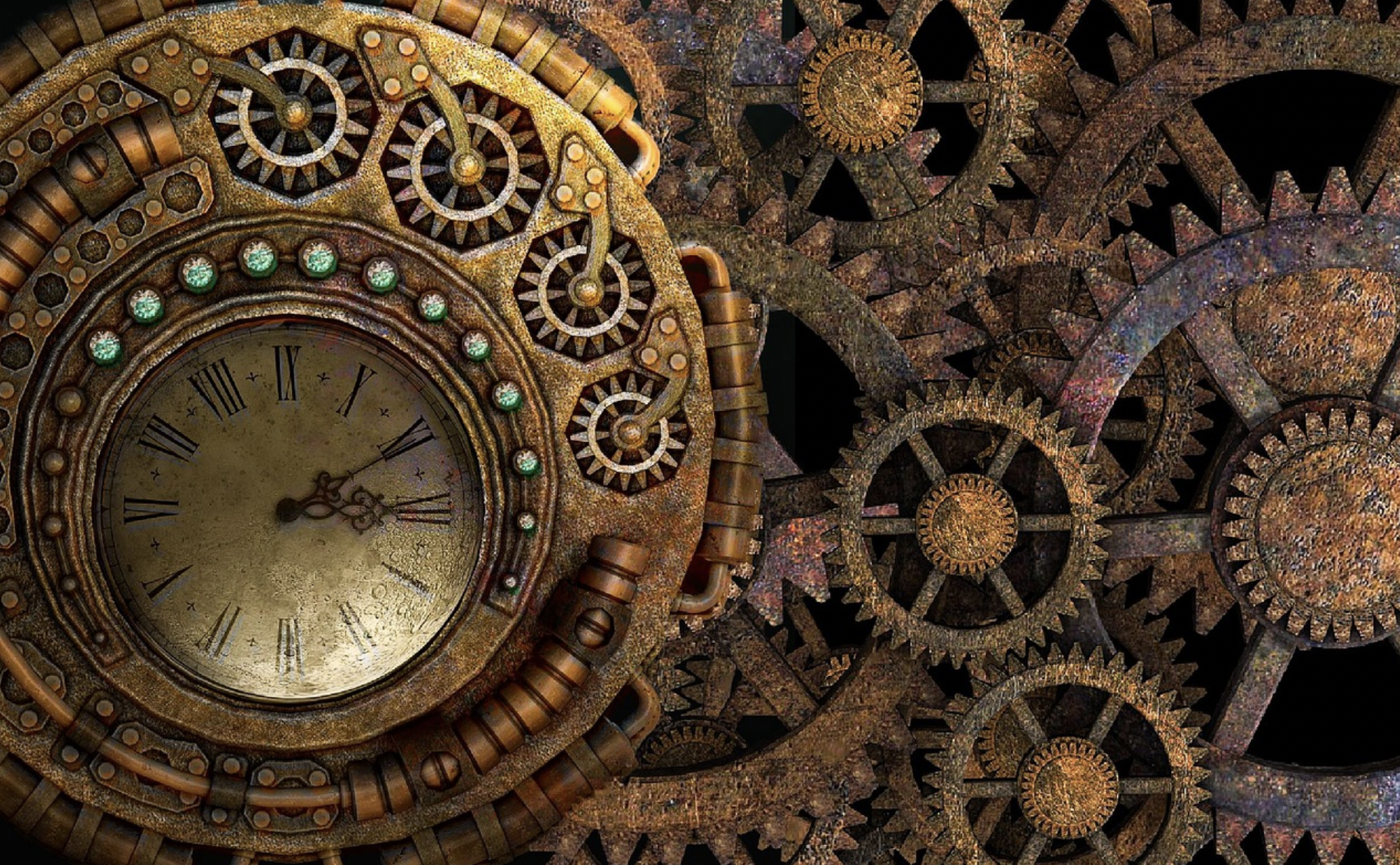
Steampunk is a name that describes a whole cultural movement. This includes a genre of science fiction based on inventions from the Victorian movement, a very defined style of fashion based on Victorian fashion ideas, a style of visual art as well as a style of architecture. For me, it represents an attempt to meld together modern technology when it was first intensely unfolding along with what was the last major defined expression of cultural elegance in Western society, before more common man ideas of culture and dress took over both cultural expression as well as daily life for modern urban society. Elegance has been perceived as a perfect antidote to the growing mechanization and even dehumanization of modern life as a result of modern technology. As technology continues to take over more and more sectors of daily life, people feel a hole developing inside themselves, a hole that represents the introjection of the experiential vacuum that is a byproduct of the expansion of modern technology in people’s lives. It is an introjection of the presence of entropy in people’s living environments, an entropy that destroys people’s sense of grounding.
People try to find different ways to restore some sense of grounding in their lives. One way is to restore a traditional refined aesthetic in which they can immerse themselves. One of the implicit notions involved in using a complex organic aesthetic as a vehicle for pulling oneself out of the experiential vacuum from without and expelling it from the experiential hole from within is that dressing up in costumes built on complex traditional decoration can get a person psyched to get involved in a more active primary experience life narrative that also would be conducive to pulling a person out of his numbness. And if not a real primary experience life narrative, certainly an imaginary primary experience life narrative.
As a matter of fact, in today’s world, where opportunities for real dynamic primary experience life narratives are scarce, given the scarcity of organic stimulation in the world, the development of a complex organic aesthetic, is inevitably going to lead to imaginary primary experience narratives. In other words, imaginary adventures and romances. Which sounds fine on the surface. Except, for these narratives, to have a deep sustained capacity to separate a person from an experiential vacuum, a person needs to have real primary experience narratives in order to be able to make, preserve and receive primary experience imprints. And without these primary experience imprints, it becomes very difficult for a person to feel vibrantly alive and to prepare for death.
So even though there is a scarcity of organic stimulation in today’s world, perhaps it would be better for those people who can be made aware of the problem with trying to come alive with imaginary primary experience narratives to focus on creating situations in their lives that are based on authentic sources of organic stimulation. As backdrops, focusing on those relatively few areas left in the world that are filled with nature or else traditional nature-inspired architecture. As sources of social interaction, attaching oneself to communities that are developed around real primary experience cultures – communities that, because of their traditional leanings, have been slower to immerse themselves in modern technology. Such communities contain the type of people who don’t need frilly Victorian costumes in order to express themselves in the forms of real primary experience narratives. Such expressions come naturally to them and as they behave in a way that allows them to leave their own organic imprints both on themselves as well as others, the different combinations of these different expressions with other people result in the creation of complex real-life narratives that have different proportions of collaboration and conflict built into them. Which in turn leave different complex real-life imprints on all the people involved in the interactions. The complexity of the imprints in these situations creates an intensity of the stimulation which works to pull people today out of the experiential vacuum with a greater intensity than otherwise would be possible.
The final way to search out possibilities for getting involved in real primary-experience narratives is to search inside of oneself for interests and activities which best align with who one is, independent of the surface influences of the people with whom one is connected within one’s community. It is a difficult task, this notion of finding out who one is. And yet there is nothing else that can serve to pull a person out of numbness the way that self-discovery can. If one can discover one’s core grounding, then discovering one’s preferred living environment and one’s preferred community of like-minded people is still important but it ends up seeming secondary in importance. Happy indeed is the person who can derive the strength and the stimulation from one’s preferred living environment and preferred community to add as an adjunct to the preferred sense of self that one truly is. Then the need for steampunk diminishes enormously.

























